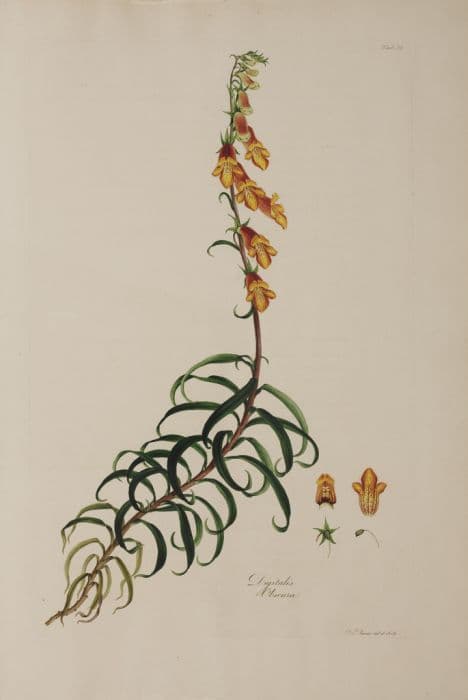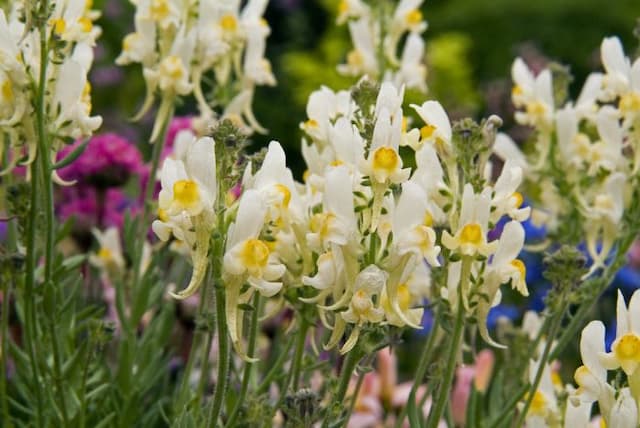Spike Speedwell Veronica spicata 'Heidekind'

ABOUT
Heidekind, a variety of Speedwell, is a delightful perennial known for its vibrant appearance and striking flowers. The plant features lance-shaped, toothed foliage that grows in a dense, bushy clump. The leaves are typically dark green, serving as an attractive backdrop for the blooms. During the flowering season, Heidekind Speedwell sends up eye-catching spikes of flowers that are densely packed together, giving the appearance of slender wands. The blossoms are a vivid pink to purple color that adds a pop of brightness to any garden, contrasting beautifully against the green leaves. These flower spikes emerge from the foliage and stand out with their upright habit, creating a visually appealing vertical structure within the plant’s profile. The blooms are a favorite among butterflies and bees, adding a lively dimension to the garden as pollinators flit from spike to spike. The Speedwell's blooms typically last from early to late summer, offering a long season of color and interest. Overall, the Heidekind Speedwell is a robust and hardy plant that brings a touch of elegance with its lush foliage and a procession of richly colored flower spikes. It serves well as a border plant and is exceedingly effective when massed in the landscape for a dramatic effect. Its flowers are also valued for adding vertical accents in bouquets and floral arrangements.
About this plant
 Names
NamesFamily
Plantaginaceae
Synonyms
Spike Speedwell, Spiked Speedwell, Heidekind Speedwell
Common names
Veronica spicata 'Heidekind'.
 Toxicity
ToxicityTo humans
Speedwell, specifically Veronica spicata 'Heidekind', is not known to be toxic to humans. Typically, there are no adverse effects noted upon ingestion of this plant. However, individual allergies and reactions can vary, and it is generally advised to avoid eating ornamental plants.
To pets
Speedwell, particularly Veronica spicata 'Heidekind', is generally not recognized as a toxic plant to pets. If pets consume it, they are not expected to experience symptoms of poisoning. Although this plant is considered non-toxic, ingestion of any non-food plant material can potentially cause mild gastrointestinal upset in some animals, such as vomiting or diarrhea, due to the novelty and fiber content rather than specific toxicity.
 Characteristics
CharacteristicsLife cycle
Perennials
Foliage type
Deciduous
Color of leaves
Green
Flower color
Pink
Height
1-2 feet (30-60 cm)
Spread
1-2 feet (30-60 cm)
Plant type
Herb
Hardiness zones
3
Native area
Europe
Benefits
 General Benefits
General Benefits- Ornamental Appeal: Veronica spicata 'Heidekind', commonly known as Spike Speedwell, offers tall spikes of deep pink to violet flowers that add vertical interest and color to garden beds and borders.
- Attracts Pollinators: The flowers of Spike Speedwell are a nectar source for bees and butterflies, promoting biodiversity.
- Low Maintenance: This perennial is known for being relatively easy to care for, requiring minimal attention once established.
- Drought Tolerant: Once established, Spike Speedwell can tolerate periods of drought, making it suitable for gardens with lower water availability.
- Long Blooming: Spike Speedwell has a long flowering period, providing color from early to mid-summer and sometimes extending into fall.
- Deer Resistance: This plant is considered deer-resistant, which can be beneficial in areas where deer browsing is a problem.
- Ground Cover: With its spreading habit, Spike Speedwell can serve as effective ground cover, reducing soil erosion and suppressing weed growth.
 Medical Properties
Medical PropertiesThis plant is not used for medical purposes.
 Air-purifying Qualities
Air-purifying QualitiesThis plant is not specifically known for air purifying qualities.
 Other Uses
Other Uses- The speedwell 'Heidekind', with its long blooming period, can be used as a natural indicator of the timing of seasonal transitions in a garden.
- Dye can be produced from the leaves and stems of the speedwell 'Heidekind', creating shades of green or blue depending on the mordant used.
- Dried speedwell flowers can be included in potpourri mixtures for their delightful appearance and subtle fragrance.
- Speedwell can be planted over spring bulbs to hide the dying foliage of the bulbs after they bloom, as it rises later in the season.
- It can be used in sensory gardens due to its soft foliage and spiky flower texture, which add a tactile element to the experience.
- Speedwell is used as a companion plant to roses and other perennials to cover lower unsightly stems and create a layered garden design.
- Edging paths and walkways in the garden with speedwell can create a delicate, low-maintenance border that requires minimal care.
- Speedwell's dense growth habit can be utilized to outcompete weeds in the garden, thus reducing the need for herbicides.
- The speedwell 'Heidekind' can be used to fill gaps in rock gardens, adding height and a pop of color between stones.
- Intricate floral photography can be practiced using speedwell's vivid blooms as a stunning, natural subject.
Interesting Facts
 Feng Shui
Feng ShuiSpike Speedwell is not used in Feng Shui practice.
 Zodiac Sign Compitability
Zodiac Sign CompitabilitySpike Speedwell is not used in astrology practice.
 Plant Symbolism
Plant Symbolism- Fidelity: Veronica spicata, commonly known as Spike Speedwell, is often associated with faithfulness. Its persistent and sturdy blooms suggest steadfastness in love and relationships.
- Clarity: The clear, vibrant colors of the Spike Speedwell's flowers symbolize the search for clarity and truth in various aspects of life.
- Healing: Historically, Speedwell was used for medicinal purposes, which adds to its symbolic value representing healing and the restoration of health.
 Water
WaterSpeedwell, commonly known as Veronica 'Heidekind', prefers consistent moisture but does not like to be waterlogged. Water the plant thoroughly when the top inch of soil feels dry, which typically means once a week during active growth periods. Amounts can vary, but a general guideline is to provide about a gallon of water per plant each time you water. Adjust frequency during hot, dry spells or periods of heavy rainfall. During winter dormancy, reduce watering to every few weeks or when the soil is visibly dry to prevent root rot.
 Light
LightSpeedwell thrives in full sun conditions, receiving at least six hours of direct sunlight daily. Place Veronica 'Heidekind' in an area where it is exposed to bright, unfiltered sunlight for most of the day. Though it can tolerate partial shade, flowering is maximized in full sun exposure, making it an ideal candidate for sunny borders or open gardens.
 Temperature
TemperatureVeronica 'Heidekind' grows best in temperate climates with ideal temperatures ranging between 60°F and 70°F. It is hardy and can survive in temperatures as low as 20°F and as high as 85°F, making it suitable for cultivation in a variety of regions. Ensure proper mulching to protect it in winter if temperatures frequently drop below the freezing point.
 Pruning
PruningPrune Speedwell to promote a bushier growth habit and to encourage more blooms. Deadheading spent flowers throughout the growing season can stimulate new blooms. Cut back the plant by one-third in late winter or early spring to encourage fresh growth and maintain a tidy appearance. The best time for a heavier prune is after the last frost, but before the plant begins its active growth.
 Cleaning
CleaningAs needed
 Soil
SoilSpike Speedwell thrives best in well-draining soil that is rich in organic matter with a slightly acidic to neutral pH ranging from 6.0 to 7.0. A mix of garden soil, compost, and perlite or coarse sand is ideal to ensure adequate drainage and fertility.
 Repotting
RepottingSpike Speedwell is generally low-maintenance and does not require frequent repotting. It can be repotted every 2-3 years or when it outgrows its current container.
 Humidity & Misting
Humidity & MistingSpike Speedwell is adaptable to a range of humidity levels and typically does well in the average humidity found in outdoor garden environments without the need for special humidity considerations.
 Suitable locations
Suitable locationsIndoor
Place in bright light, ensure good ventilation.
Outdoor
Full sun, well-drained soil, space 12 inches apart.
Hardiness zone
3-8 USDA
 Life cycle
Life cycleVeronica spicata 'Heidekind', commonly known as Spike Speedwell 'Heidekind', begins its life cycle with germination, which occurs when conditions are favorable, typically in the spring. The seedlings emerge and grow into vegetative plants, developing a rosette of leaves at the ground level. As the plant matures, it develops upright flowering stems during the late spring to summer period, producing small, spiky clusters of vivid purple flowers that attract pollinators. After pollination, the flowers produce seeds which enable the propagation of the next generation. In late summer to autumn, the plant's growth slows and it may begin to go dormant, especially in climates with cold winters. Over winter, above-ground parts of the plant may die back, but the root system remains alive and the cycle recommences with new growth in the subsequent spring.
 Propogation
PropogationPropogation time
Spring-Early Summer
Veronica spicata 'Heidekind', commonly known as Spike Speedwell, can be propagated by division, the most popular method, ideally in the early spring or fall. To divide the plant, carefully dig up the clump, ensuring a good amount of roots with each section. Gently separate the clumps into smaller pieces, each with several shoots and a healthy root system. After that, replant the divisions immediately in well-draining soil, spacing them about 12 to 18 inches (30 to 45 centimeters) apart to allow for growth. Water the newly planted divisions thoroughly to help establish them in their new location.








![Hebe [Garden Beauty Blue]](/_next/image?url=https%3A%2F%2Fplants-admin.emdemapps.com%2Fimages%2Fplants%2F%2Fimages%2F604b58cbcb4e2.png&w=640&q=75)
